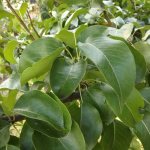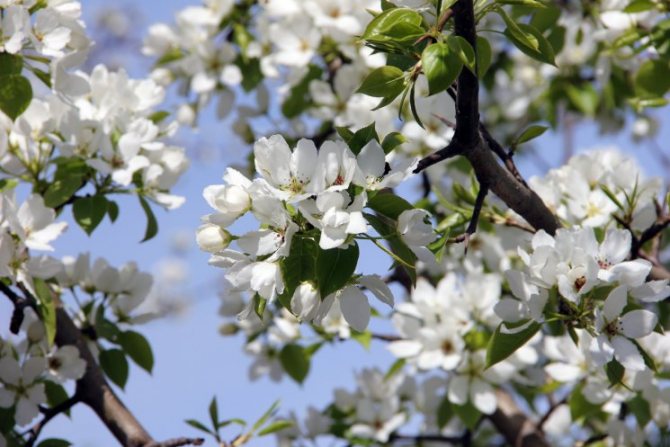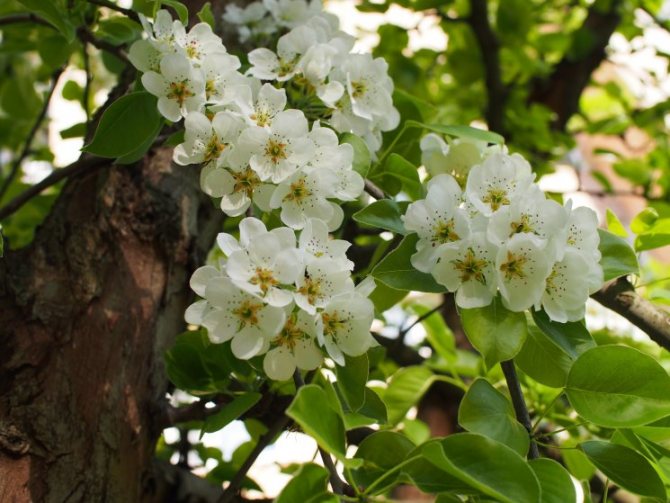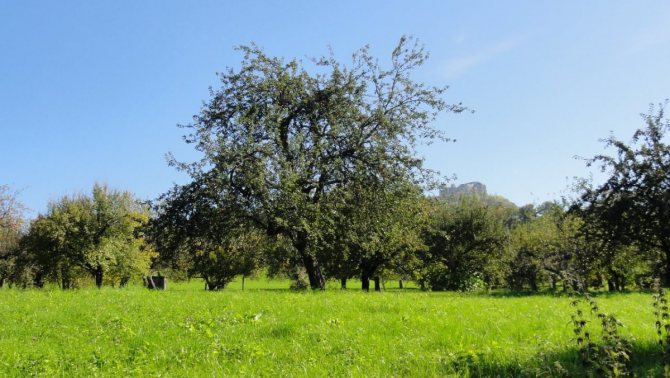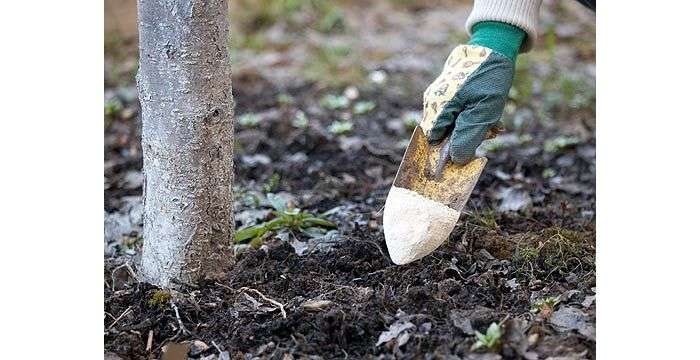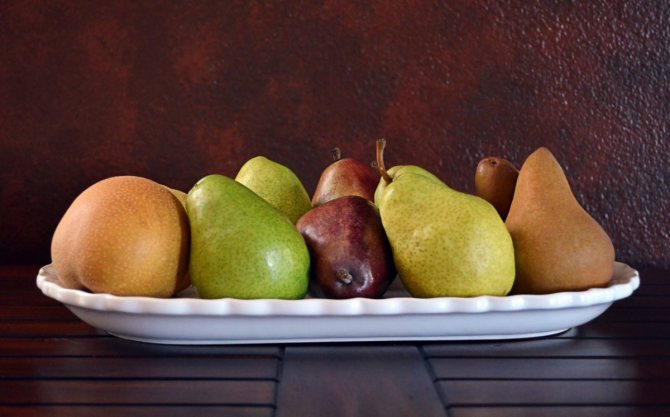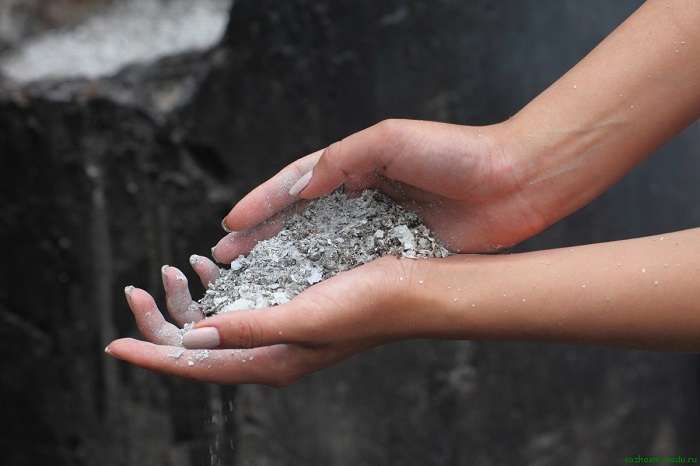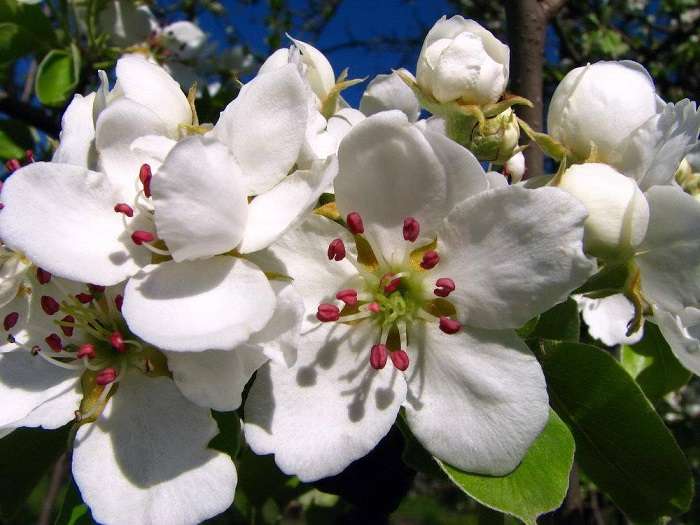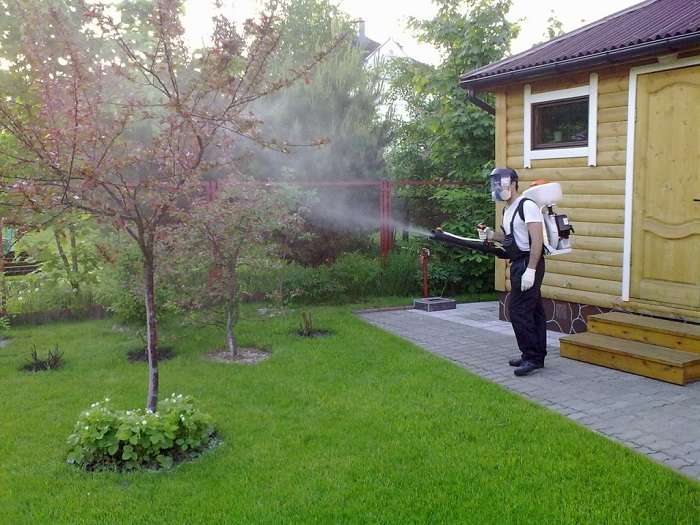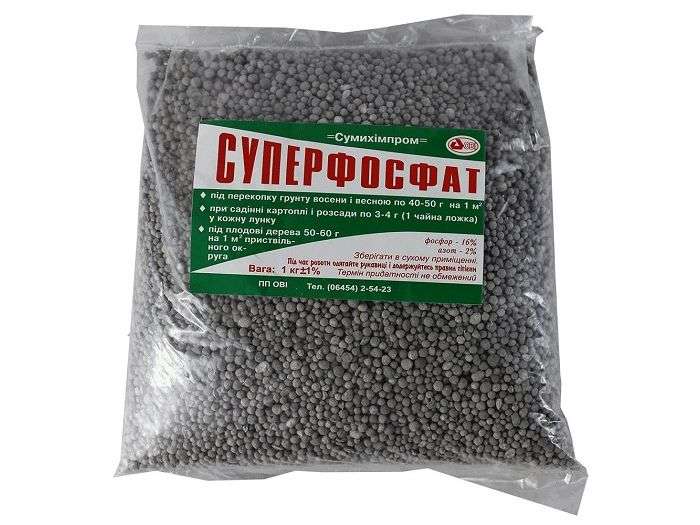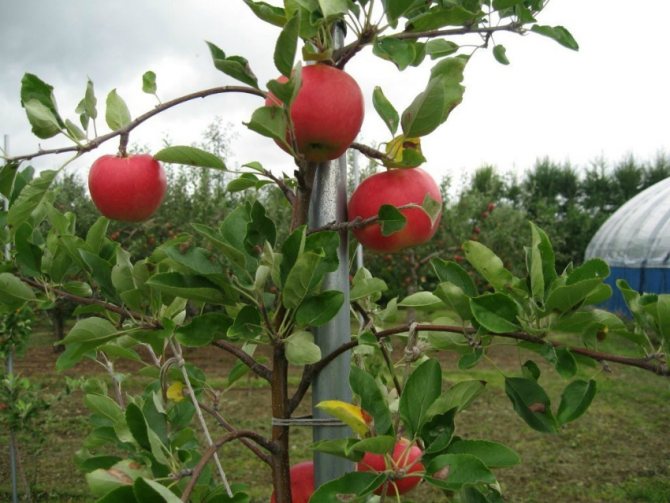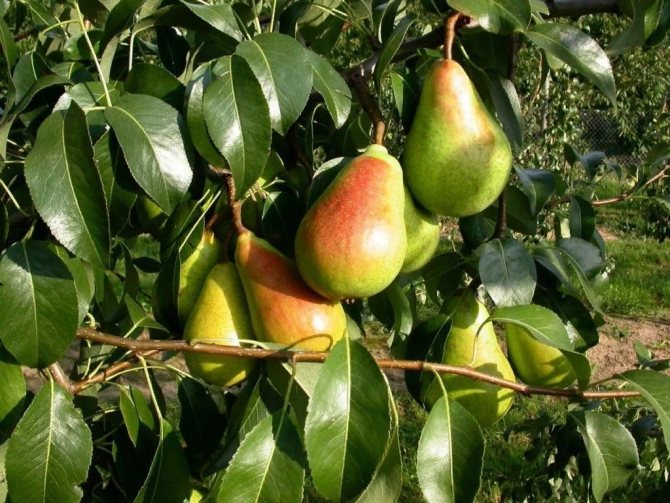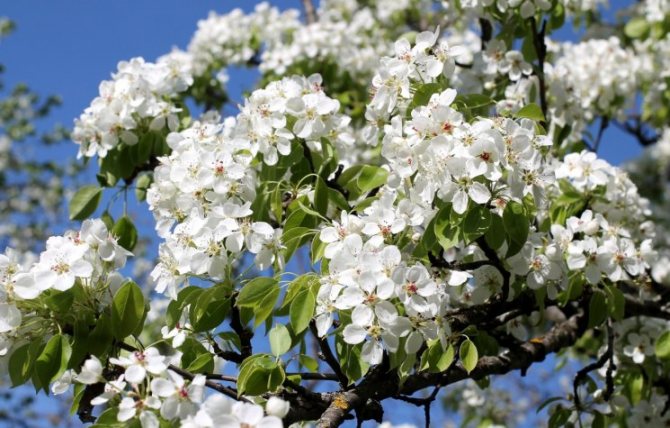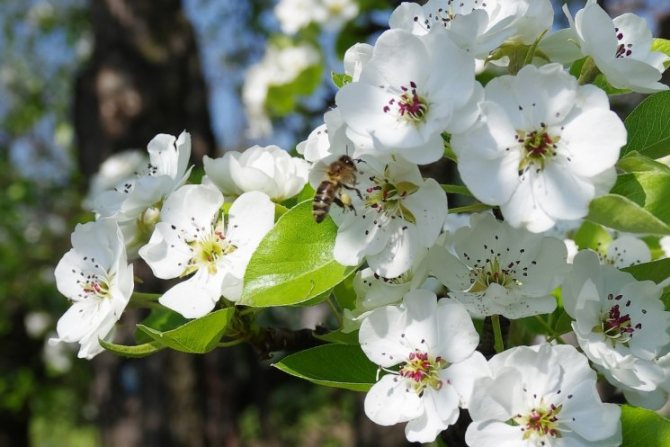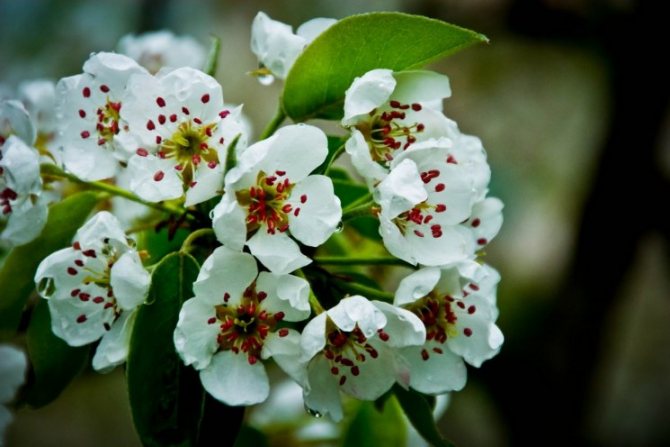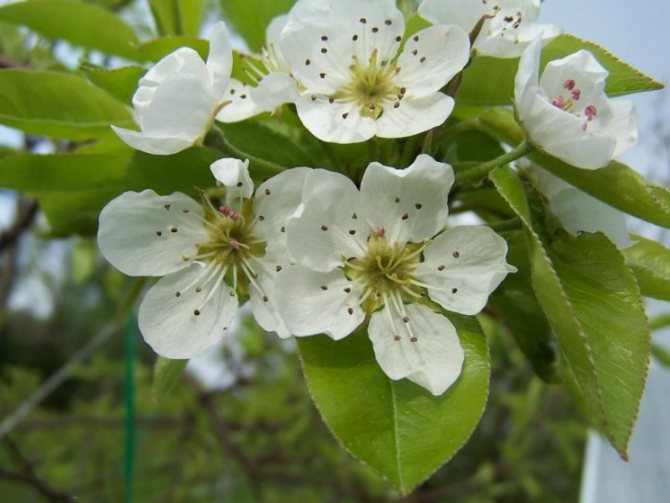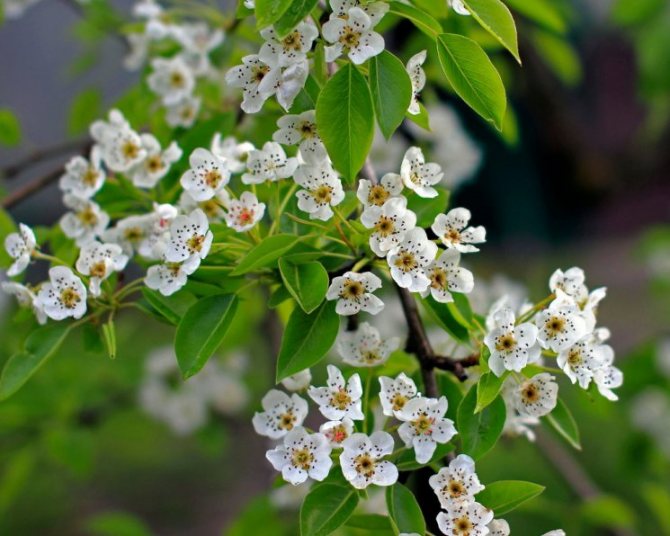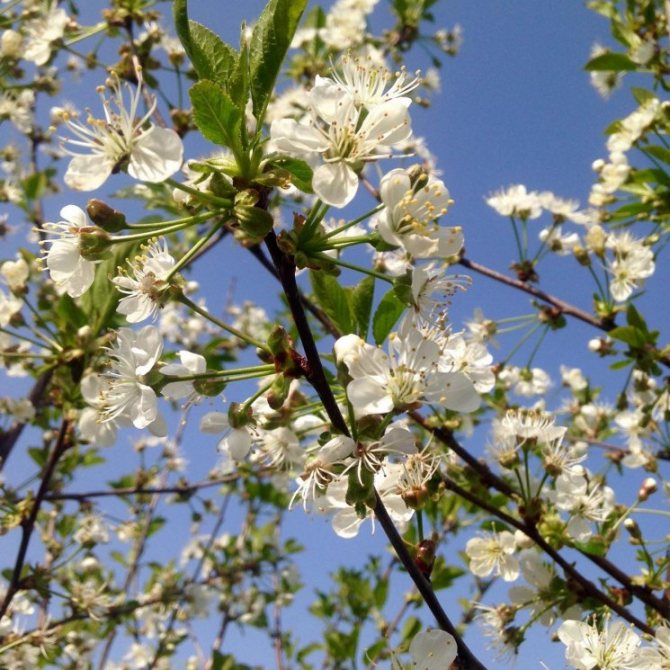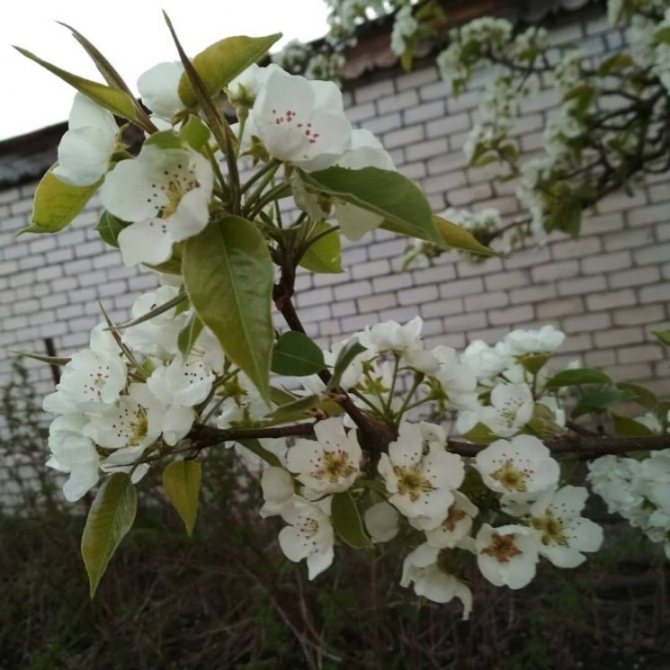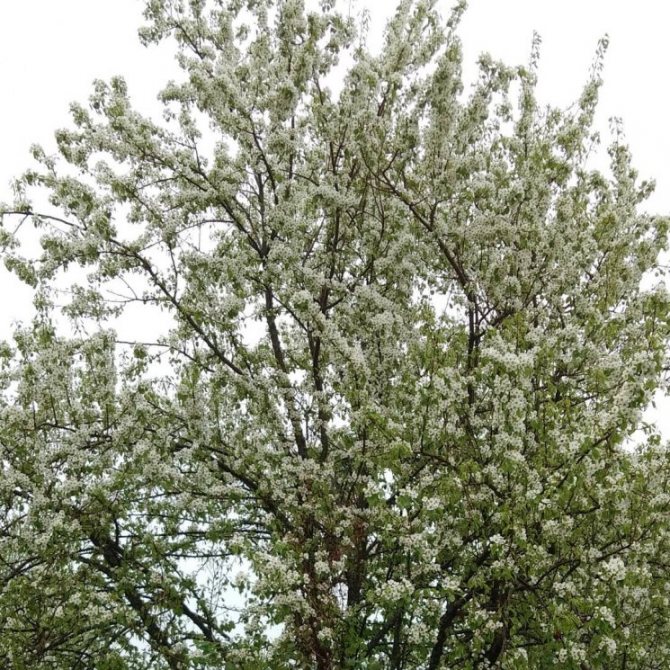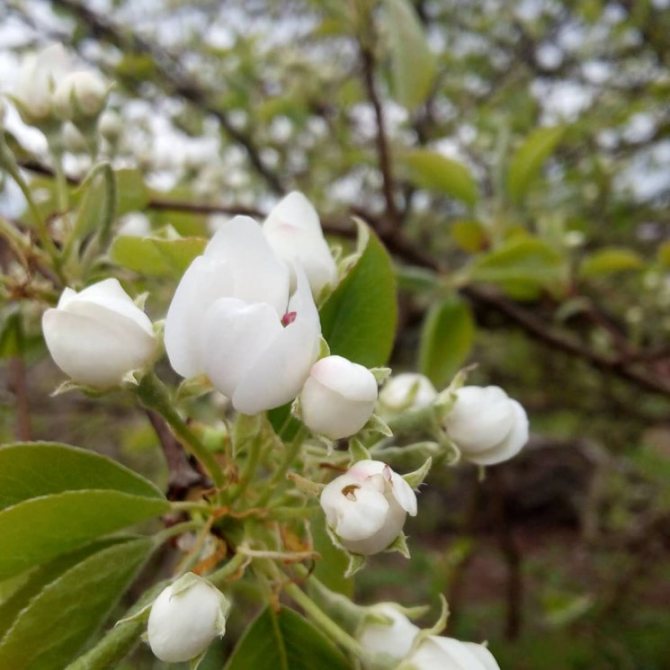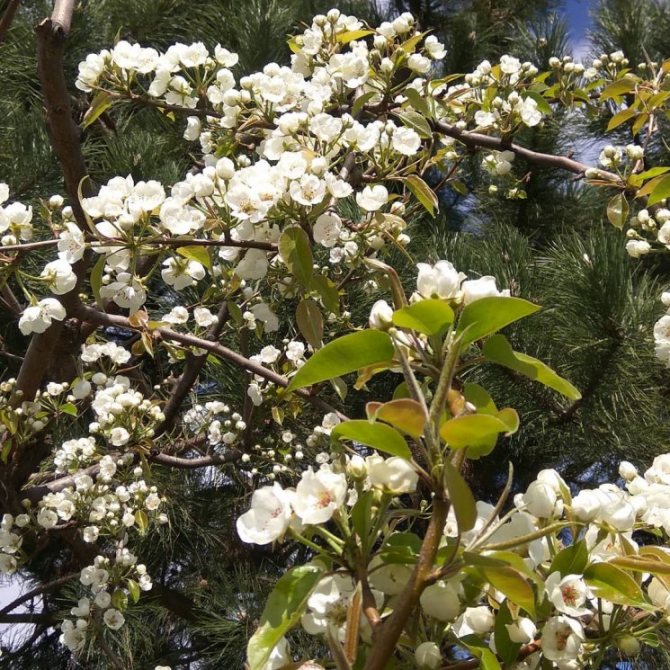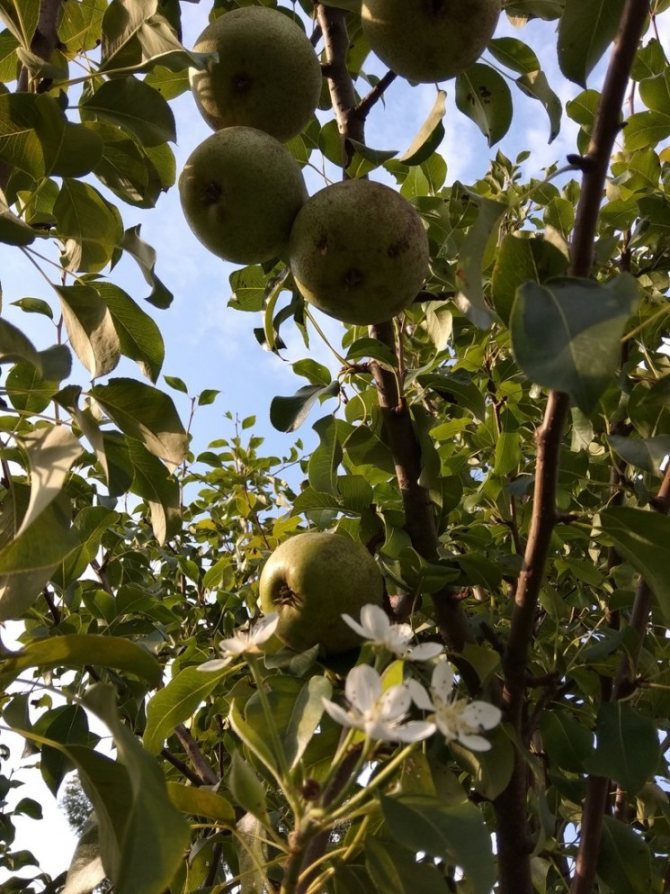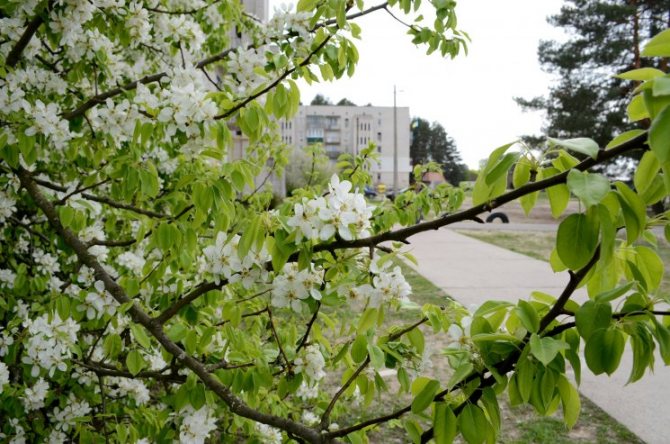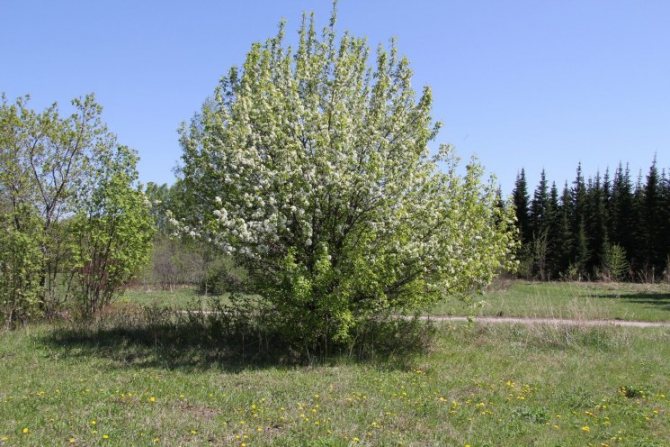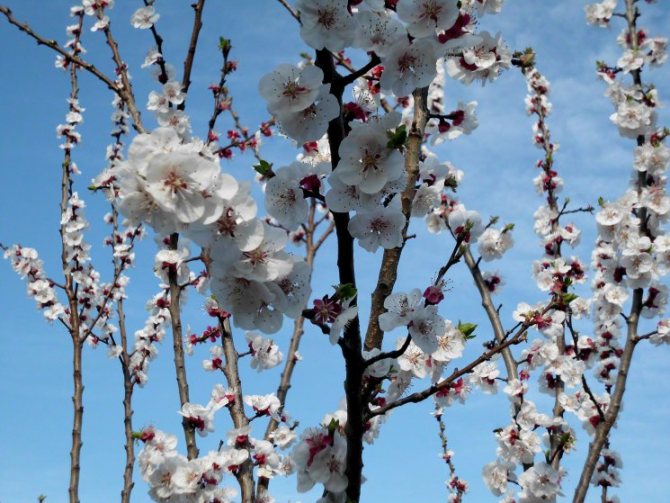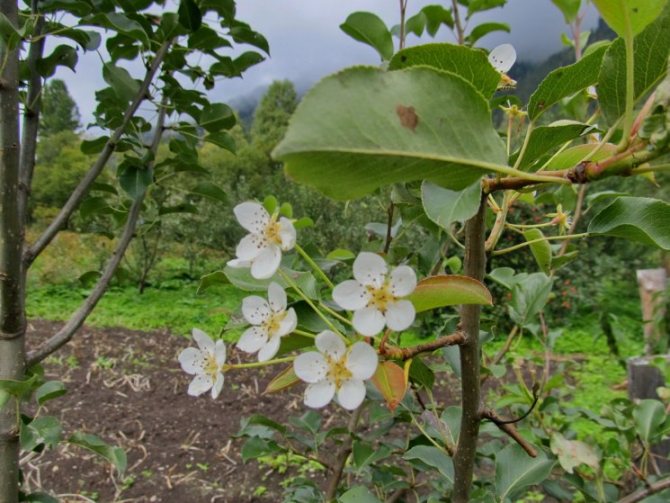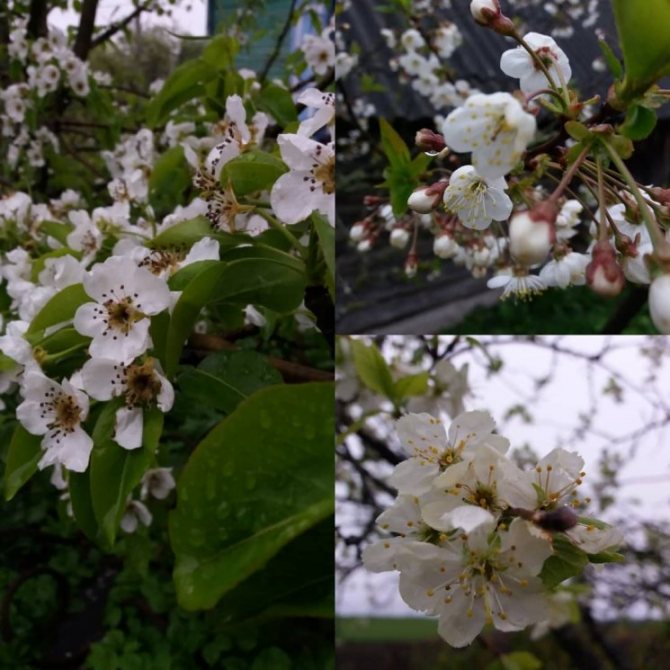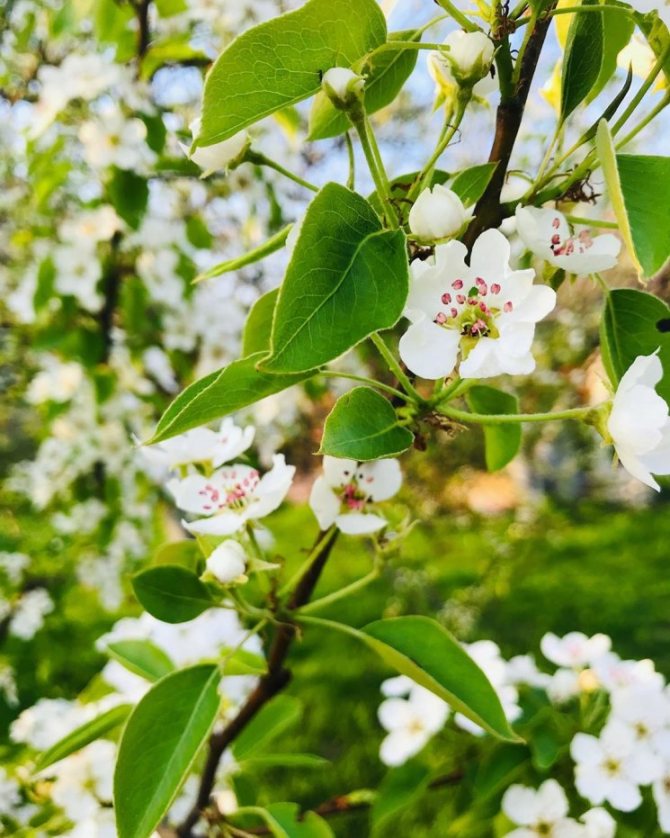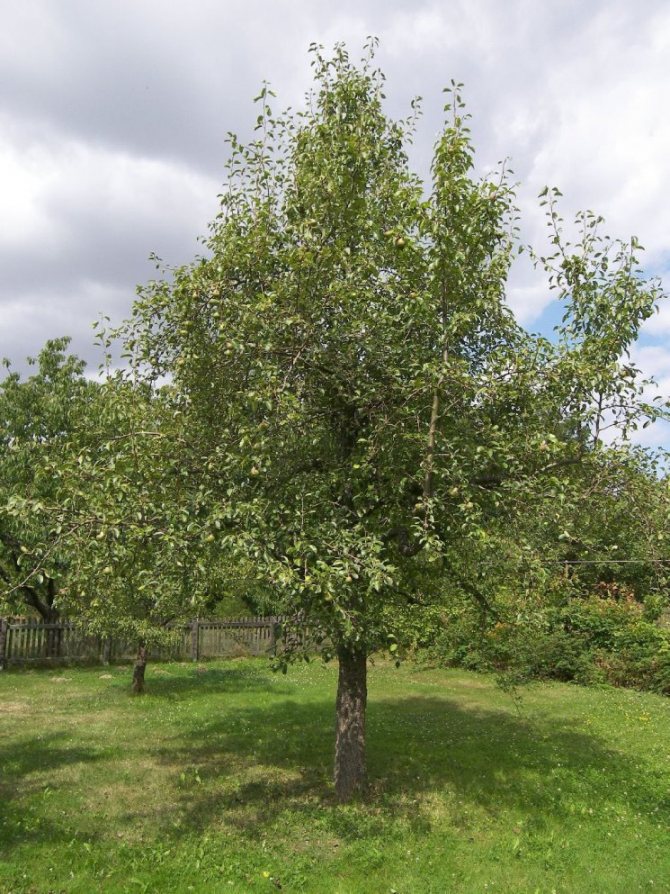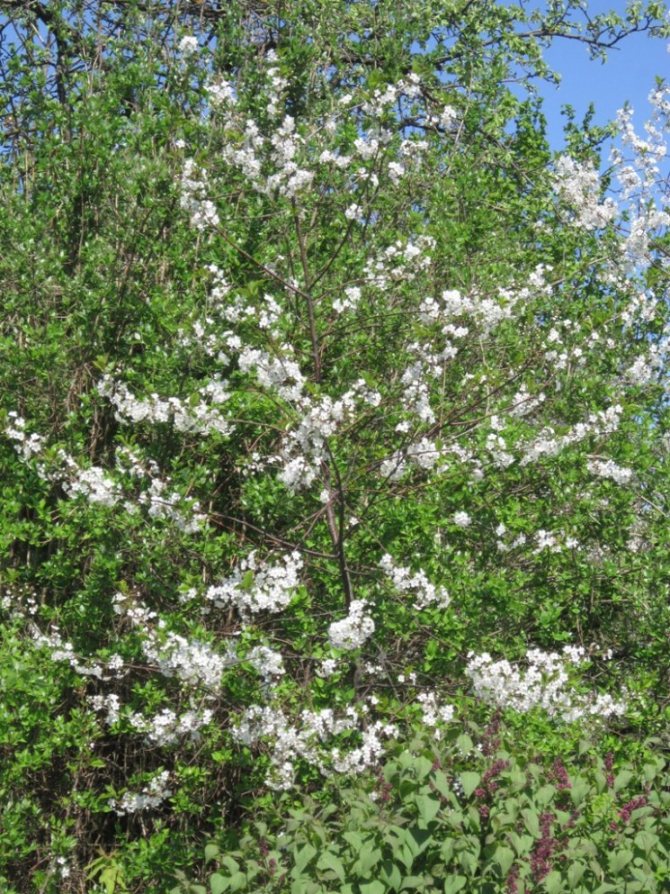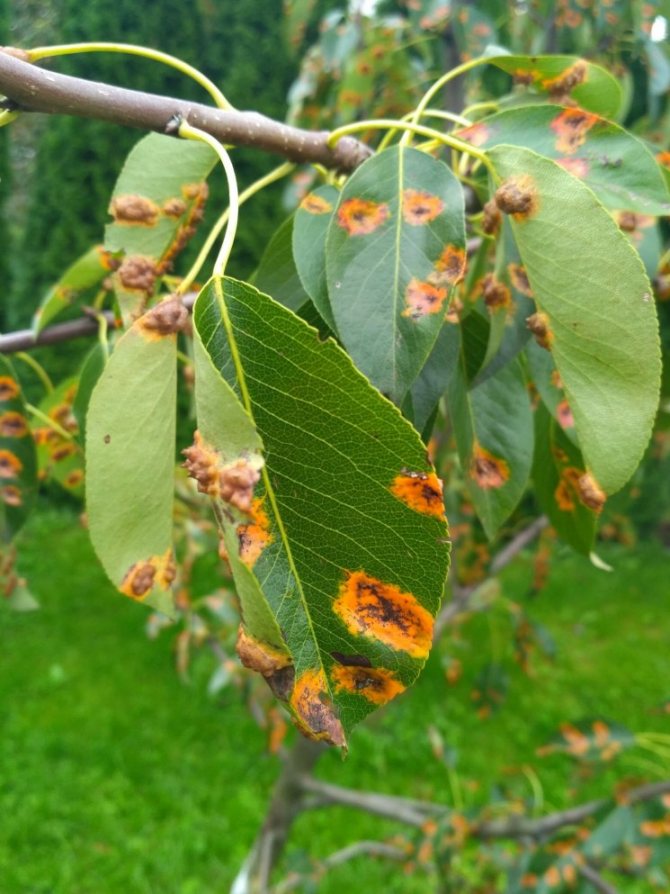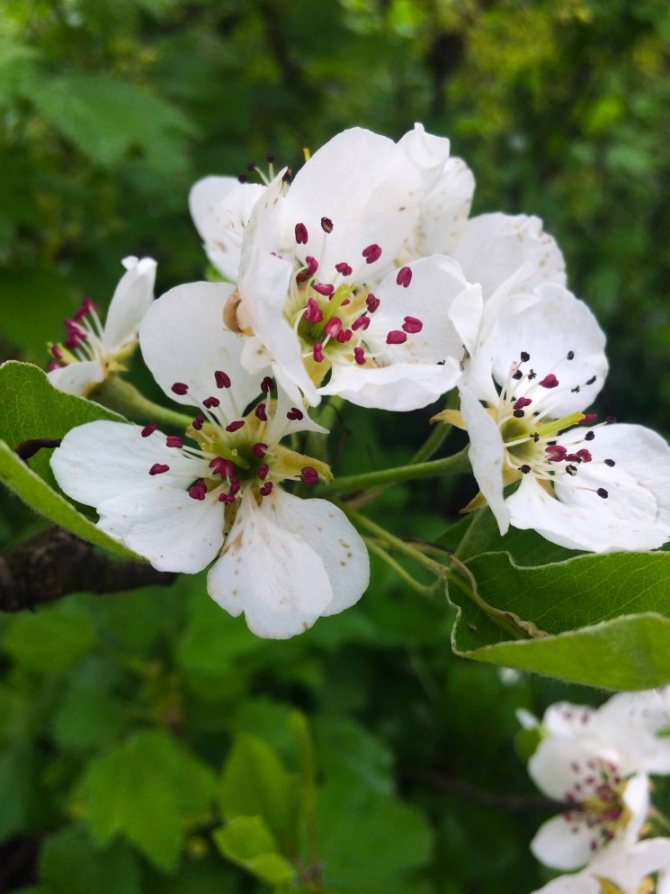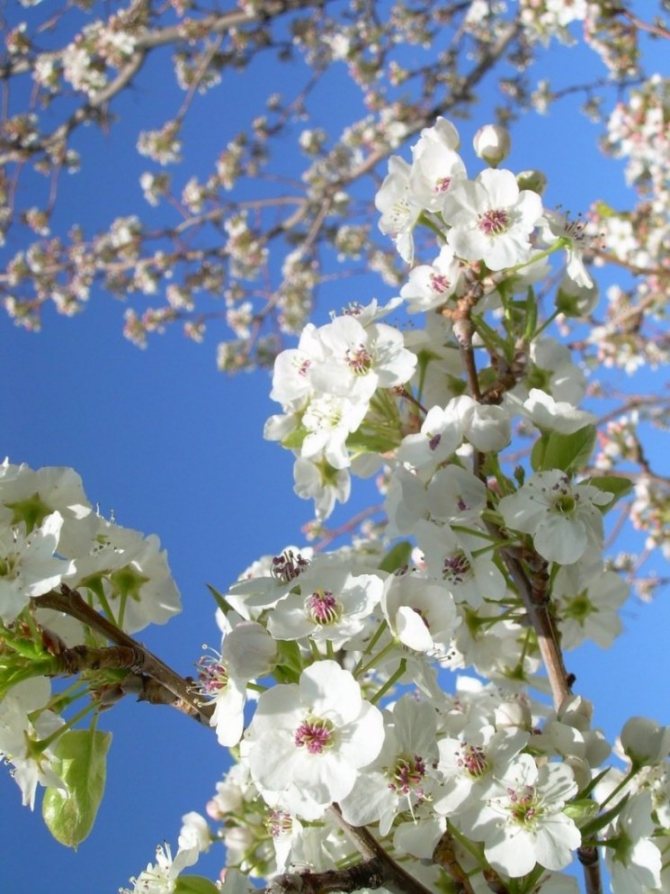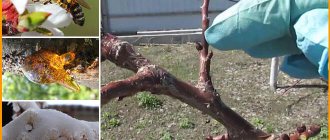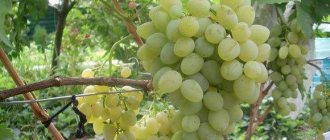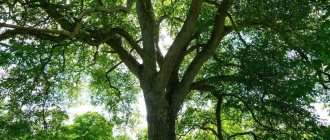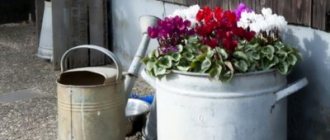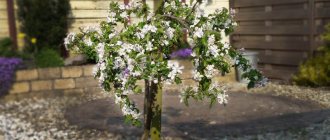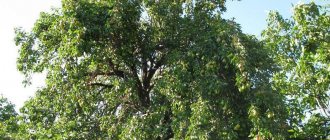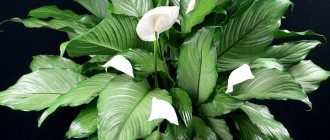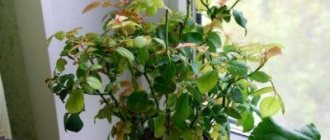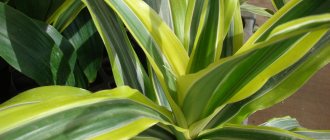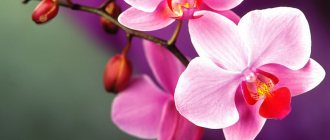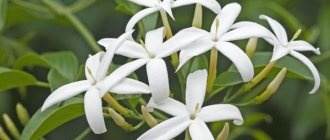How to speed up the process of obtaining fruits
You can make the pear bear fruit faster using several methods:
- If you wind a fruit belt, consisting of several layers of film and copper wire, on a pear branch. The winding should be tight in order to pinch the vessels of the plant. This will reduce the outflow of sap to the roots, which will cause the plant to actively form buds. The belt is applied in early spring and must be removed after the leaves fall. Otherwise, there is a risk of drying out the branch.
- The branchy frame of the tree grows gradually in an almost vertical position. This is a characteristic feature of this fruit plant. To make the pear bear fruit, the branches are tilted. Gardeners consider the optimal angle of inclination to be 50-60 °. For this, a load is hung on a branch or a spacer is placed.
- When the branch is thick and cannot be deflected with the help of a load, a small cut is made at the base of the pear branch. In this case, it is necessary to deflect and fix the branch with the help of a stake driven into the ground. The place of the cut is treated with garden varnish or wrapped with electrical tape.
- A young tree, which has never borne fruit, is subjected to furrowing of the bark. For this, the bark of the tree is carefully trimmed from the north side. The procedure is carried out on the branches of at least 50 cm, the incisions are treated with a weak solution of copper sulfate.
- Retardant treatment is considered a separate way to accelerate fruiting. It is a biologically active solution that can slow down the elongation and division of plant cells. Thanks to this, the plant does not waste energy on the growth of branches, but begins the reproduction of fruiting buds.
Other reasons for the lack of flowering
If all the conditions for planting and care are met, but the pear does not bloom and does not bear fruit, diseases can become the cause.

One of the common reasons for a lack of color on a mature tree is a lack of nutrients. Because of this, there is simply not enough strength for the formation of kidneys. You can solve the problem by feeding.
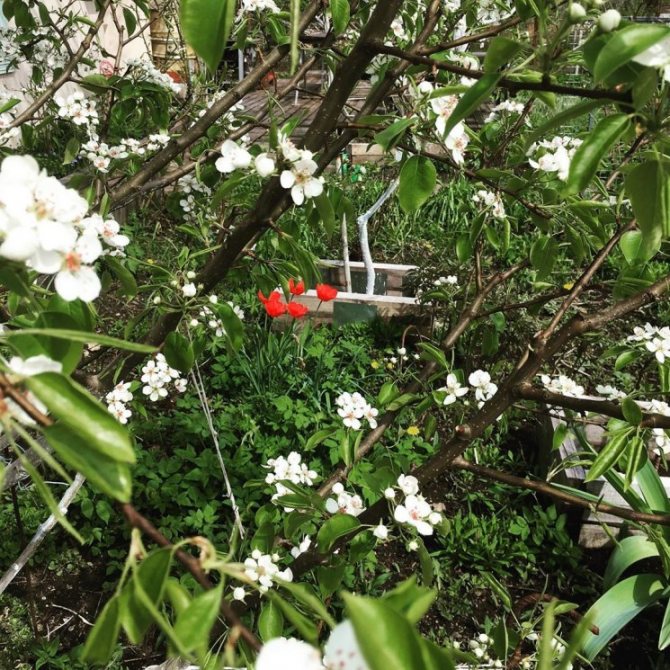

If buds form on the tree, but they fall off before they can start, this indicates the presence of pests. In this case, there will be a struggle with the gold-tailed, honeydew or flower beetle.
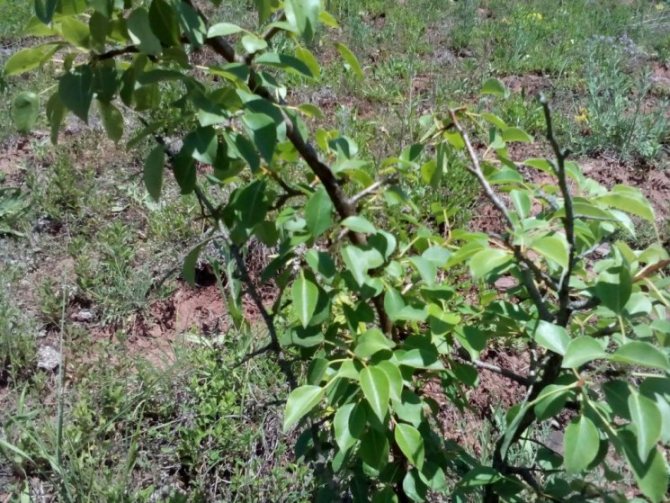

Among the reasons why the pear does not bear fruit, scab, powdery mildew, rust, cytosporosis, fire blight or white spot are also called.
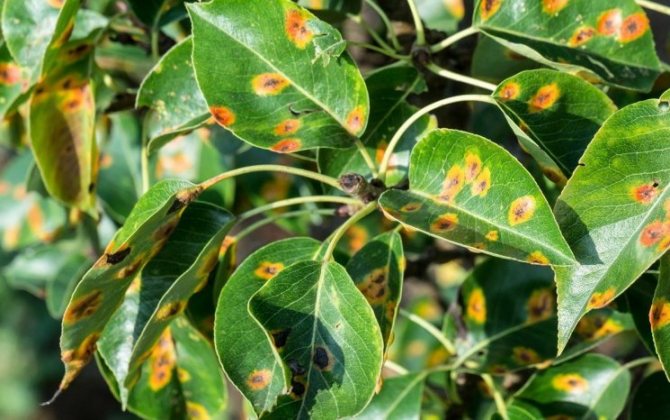

Also, do not rejoice if flowers re-formed on the tree in the fall. This is how profiling manifests itself, which will deprive the gardener of pear fruits next year.
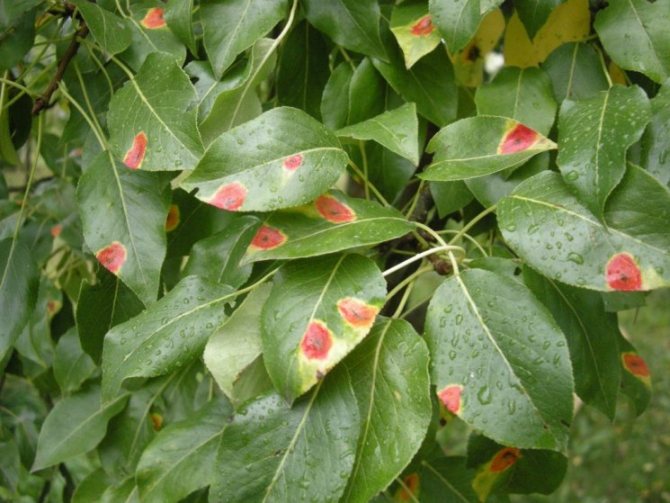

How many years on average bears fruit?
It is impossible to answer this question unambiguously. According to this indicator, pear varieties are very diverse. This period can last 10 and 50 years. After the decay of fruiting, the tree dies very quickly.
Statistically, the maximum fruiting age of pear trees is considered to be 60-70 years. But statistics, of course, contain exceptions. Cases have been recorded when pears reached the age of one hundred and even 150 years.
Now you can still find here a 100-year-old Lemon Pear variety. Common pear is also distinguished by its longevity, against the background of other varieties. Its life span is up to 120 years, and under favorable conditions, it bears fruit for up to two hundred years.
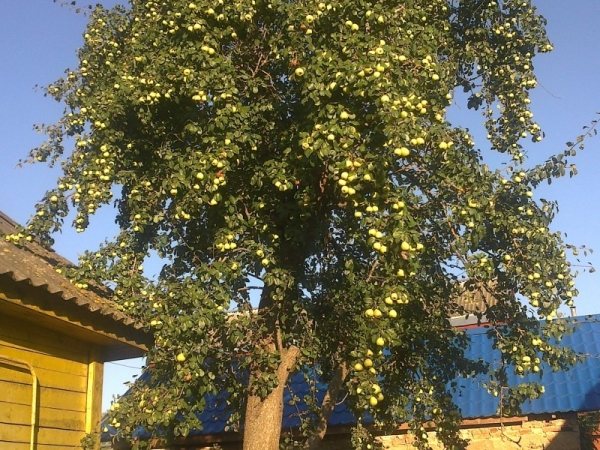

Pears bear fruit on average from 10 to 50 years, there are varieties that bear fruit up to 100 years
In what year after planting the tree begins to bear fruit: varietal characteristics
The pear does not have a certain age at the beginning of fruiting. This age for different varieties of pears varies greatly - from 10-15 years, to ultra-fast varieties of one year.
Below is the age of the beginning of fruiting of some popular pear varieties in alphabetical order:
- Annushka - 1-2 years after planting;
- Bergamot - for 7-8 years;
- Bere Bosk - for 6-7 years;
- Bessemyanka - by 8-9;
- Veles - for 5-7 years;
- Victoria - for 6-7 years;
- Williams - for 5-6 years;
- Children - for 4-5 years;
- Duchesse - for 5-6 years;
- Forest beauty - for 6-7 years;
- Lemon - for 7-8 years;
- Honey - for 3 years;
- Moldavian early - for 3-4 years;
- Nika - for 5-6 years;
- November - for 3-4 years;
- In memory of Yakovlev - for 3-4 years;
- Petrovskaya - for 3-4 years;
- Pushkinskaya - for 4-5 years;
- Rogneda - for 3-4 years;
- Rossoshanskaya late - for 5-6 years;
- Sibiryachka - for 4-5 years;
- Fabulous - for 5-7 years;
- Early ripening - for 5 years;
- Treasure - for 5-7 years;
- Talgar beauty - for 4-5 years;
- Favorite - for 7-8 years;
- Chizhovskaya - for 3-4 years.
The best varieties of pear columns for the Moscow region
Every gardener tries to plant all possible fruit plants in his garden. At least one representative of one or another species must be on the site. How about planting columnar apples and pears? These beautiful trees are compact and low, but yield large yields. In today's article I will tell you exactly about them. Here you will also learn about some of the varieties of columnar apple and pear trees and how to care for columnar apple and pear trees.
And now about all this in more detail.
Columnar apple and pear trees, as mentioned above, are dwarfs, which can be of two types: seed (natural dwarfs) and grafted (obtained by grafting). Natural dwarfs (they have a natural gene that is responsible for short stature) include such varieties as Currency and Arbat (apple trees).
For growing apple trees, such undersized rootstocks as Dusen, Paradizka are suitable, and for pears the best stock is quince, but you can also use irgu. These rootstocks can be used for columnar and common fruit trees.
Columnar apple trees can already bloom and give several fruits even in the nursery, being a one-year-old plant, in contrast to ordinary tall breeds. But the bulk of dwarf apple trees begin to bloom and bear fruit in the second or third year, and pears also bloom in the second year.
When the columnar pear begins to bear fruit
Although such plants yield a good harvest, the garden of them will soon have to be re-planted. Since dwarf trees live very little - from 7 to 10 years.
If the columnar apple or pear is not cut off, then they can reach a height of 2-2.5 meters.
Columnar apple and pear trees have a much thicker trunk than simple fruit trees. Fruit branches are located across its entire surface, so the side branches can be easily removed or shortened. More on pruning will be discussed later.
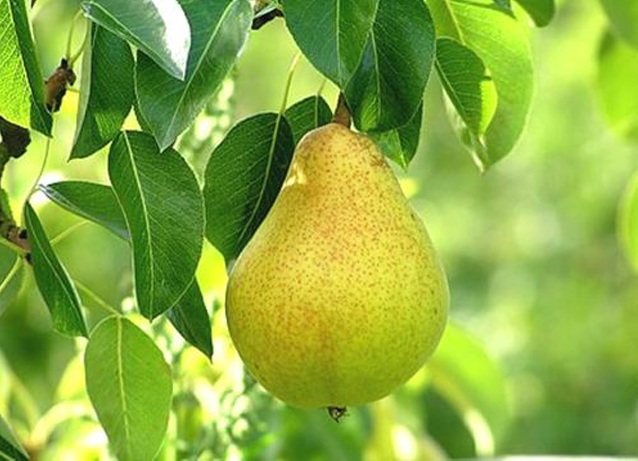

Such columnar fruit plants are remarkable in that their yield (in terms of tons per hectare) is much higher than that of ordinary trees (approximately three, or even four times). Of course, this can be achieved if the trees are well looked after.
We also want to talk about some varieties of columnar apple trees and varieties of columnar pears.
Landing scheme. Columnar fruit trees can be planted denser than ordinary ones, since the plants practically do not branch out. You can choose the planting scheme yourself, the minimum distance is 40 by 40 centimeters, and the maximum such pears and apple trees can be planted at a distance of 120 by 120 centimeters. Choose a planting pattern that works best for your garden so that these trees don't interfere with other species.
The soil should be well fertilized. It is advisable that the pits in which the planting is planned should be prepared in the fall. At this time, fertilizers can also be applied (manure, compost - one bucket for 5 - 7 holes is enough), mixing them with the ground.
Columnar trees are planted in the fall (from August 20 to mid-October) or in the spring (from April 10 to mid-June). It is better to do this in the spring, since in the fall the weather can change dramatically (the cold will come) and the plants will not have time to take root and, as a result, die. In the spring, if short-term frosts happen, the plants will recover over the summer.
Choose a place that is best protected from the wind. Free areas near fences or outbuildings are perfect.
Caring for such pears and apple trees is not much more difficult than for ordinary ones. And can it be called "difficulties"?
Care in the year of planting
DETAILS: How much honey mushrooms to cook. How long does it take to cook honey mushrooms?
In the year of planting, the plants may bloom, but it is better to remove the flowers of this year, since the trees have not really taken root yet and they need strength for rooting. If you leave flowers, then they can worsen the condition of the plants and as a result, in the future you may be left without a crop.
Removing inflorescences
After a year, well-adapted plants will bloom again and begin to bear fruit. There will not be many fruits (from two to four - five), but every year the number of fruits on the tree will increase. In order for the fruits to grow large and beautiful, and the trees are not overloaded, you need to leave two flowers in each link (several buds together).
Caring for columnar apple and pear trees is still not so difficult. I think you take care of ordinary fruit trees even more.
Pruning of columnar apple and pear trees is carried out in spring (April) and summer (mid-July - mid-August). It is necessary for the trees to have a constant shape. You should not cut the plants very much, since the more you cut it, the more they will branch out and give unnecessary shoots.
There should be three to five buds on the cut branch (no longer needed). If the trees have weak branches, they can not be cut off, but simply pinched (the tip of the shoot is pinched off). If the plant is young (annual or biennial, depending on which one you planted), its branches are shortened more - only two buds are left.
After pruning, one problem may arise - the appearance of a large number of lateral branches with flower buds. They need to be thinned out, since the plant spends strength on them and, as a result, the harvest will be weak.
Many gardeners complain that columnar apple and pear trees require special care, but at the same time they are delighted that the harvest is high enough. Also, many are pleased that almost all varieties of columnar pears and apple trees are resistant to a number of diseases, as well as frost. According to most gardeners, columnar apple and pear trees are excellent fruit plants that are worth growing in your garden.
Columnar apple and pear trees are a great addition to your garden. In addition, now you know about what columnar apple and pear trees love.
Have a great harvest!
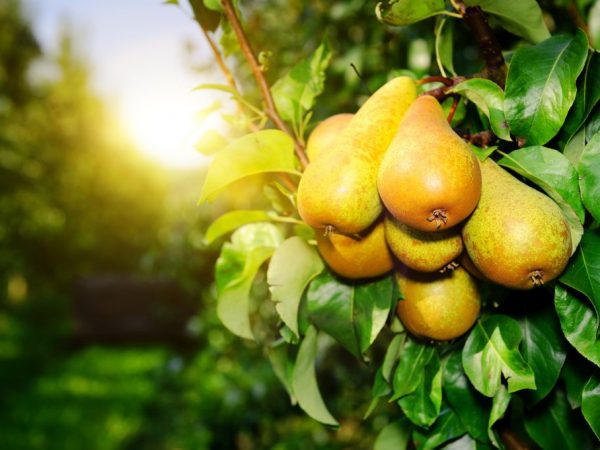

I advise, dear readers, to receive fresh articles. so as not to miss the publication of new materials on this blog.
The trunk of a columnar pear is larger than that of the fruit trees we are used to. And branches with fruits are along the entire length of the trunk. Excess twigs are removed without difficulty.
Sapphire. The first fruit bears in 3 years. Fruit can be harvested in September. The peculiarities of the fruit are considered to be an elongated shape and a greenish-pink hue. Pears, as a rule, are large, the weight of one reaches 250 g. Sapphire does not like frost, so storage in the basement will not suit her. Cultivation in the suburbs is possible.
Carmen.The fruits ripen very quickly and are ready for harvesting in the summer. Ripe pears of bright burgundy color and very large, about 300 g. Sweet.
Tenderness. This variety belongs to the autumn. Fruit weight in the middle, up to 150g. Features: egg-shaped, deep green color. The pulp is juicy and tender, sourish on the palate.
Honey. The fruits ripen in summer, by mid-August. The fruits are yellow-green in color. One of the largest, the weight of one pear reaches 400 g. The taste is very sweet and juicy, the pulp with a pleasant light aroma.
The tree is easy to tolerate frost and unpretentious in the place of planting, it grows from almost any soil.
DETAILS: White apple tree filling planting and care
D-3. The variety can be harvested in September-October. Fruits are of the normal shape of a pear, but wide and lumpy. The skin is bright yellow, very juicy. Like honey, large - 400 g. The variety easily survives frosts.
Column-shaped pear G-3
Pavlovskaya. Fruits appear in the 2nd year, in October. The fruits are large, sweet and juicy. The peel is thin, yellow-pink in color.
D-5. I ripen in August - September. Outwardly yellow, the weight reaches 250 g, the pulp is sweet and sour and juicy. Disease resistant and frost tolerant.
Intensive orchard technologies, actively used in the production of fruit products, are increasingly attracting modern gardeners. New varieties and types of fruit trees provide an opportunity to get a bountiful harvest in small areas.
Whether the grower adheres to the compacted planting technology or plants fruit trees according to the classic scheme, this amazing tree will surely become a highlight in any garden.
This type of pear appeared thanks to the selection work of Mikhail Vitalievich Kachalkin. Having founded an Experimental Breeding Nursery in the Tula Region in 1998, M.V. Kachalkin began work on the creation of columnar apple trees. On his account, the creation of many modern varieties.
Kachalkin did not bypass his attention and pear. He does not call it columnar, he considers it super dwarf, since the branches have a tendency to spreading.
- the vigor of growth of a relatively vigorous rootstock is reduced by 5-8 times;
- practically not susceptible to diseases;
- grown on seedling stock;
- long growing season;
- columnar pears differ in height;
- they differ in terms of ripening;
- the average size of the fruit is from 150 to 400g;
- yield - 3-8 kg per tree.
- The size. The main disadvantage of a pear is its height. To control this parameter, you have to constantly prune and pinch skeletal branches and shoots. It is this shortcoming that breeders have tried to eliminate. As a result, depending on the variety, the growth of a superdwarf tree varies from 0.8 to 2.5 m. This indicator becomes especially important when the harvest season comes.
- Convenience of placement. The diameter of the crown of an adult columnar tree does not exceed a meter, so it can be found in any garden. The crop is extremely convenient for compact plantings. Due to their size, such specimens are easy to place along the fence and next to buildings where there is not enough space for standard-sized trees.
- Early fruiting. Compared to medium-sized pears, which begin to yield in the fifth or seventh year, the columnar begins to bear fruit the next year after planting. In the second or third year, a young tree begins to bear fruit in full force.
- Seed stock. Columnar pears quickly and easily settle down in a new place, are not demanding for watering, grow well on almost all types of soil. Superdwarfs have a shallow root system, which allows them to be planted even in areas where the water table is high.
- Fruiting period. Breeders have developed varieties of columnar pears that have different ripening periods. Due to its compactness, several plants can be planted at once, thereby increasing the fruiting period from mid-summer to late autumn.
- Large fruits. Despite the fact that the columnar pears, the trees are small, the fruits grow on them large, with excellent taste.
- Decorativeness.
Columnar pear is an amazing plant that can be used in group plantings, or as a tapeworm among flowers and shrubs.
Will a pear bear fruit if it is alone?
This question has already been partially answered above. But let's say a few more words about this.
The pear is predominantly a cross-pollinated plant. Therefore, self-pollination does not lead to the formation of an ovary. And therefore, the likelihood of the birth of fruits in one pear in the garden is small.
It is good in this case if pears grow at neighbors on the site. But you can solve this problem yourself by planting together (at a distance of 3-4 meters) several different varieties of pears.
And if the lack of space does not allow this, then 1-2 branches of another variety can be grafted onto a variety of one pear.
However, there are pear varieties that are capable of self-pollination. This phenomenon is quite rare, and therefore very valuable. Therefore, here are some of them.
These include: Banquet, Bere winter Michurina, In memory of Yakovlev, Chizhovskaya, Yubileinaya Korneeva.
Ways to fight disease
Having determined why the pear does not bloom and does not bear fruit, action should be taken.
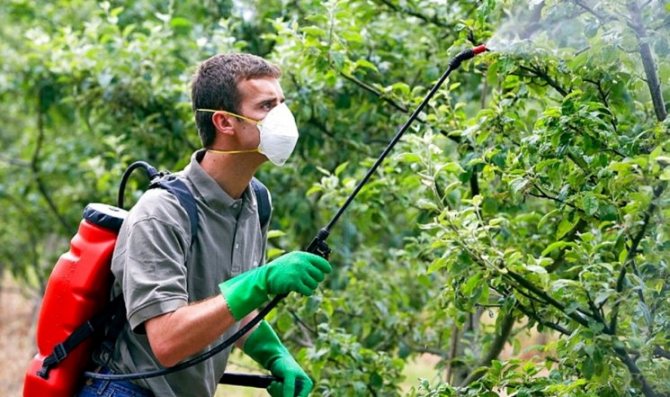

If insects or diseases are the cause, you should use the following remedies:
- A solution of Bordeaux liquid. When applied for the first time, its concentration should be 3%. With repeated processing, the amount is reduced to 1%.
- Fungicides and insecticides are an effective way to deal with pests.
- Also, do not neglect preventive measures. They consist of whitewashing the trunks, removing dead branches and removing fallen leaves.
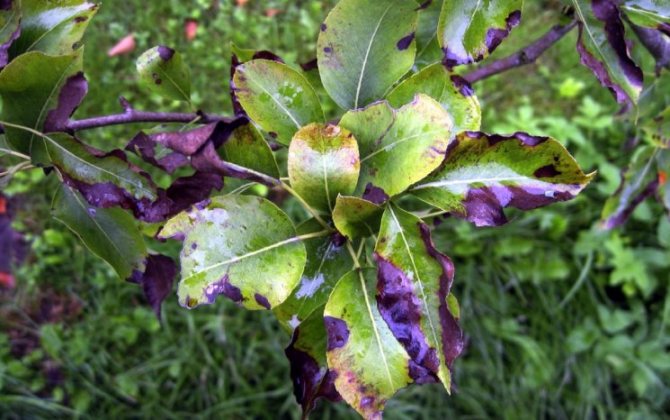

To summarize, there are several reasons why the pear does not bear fruit.
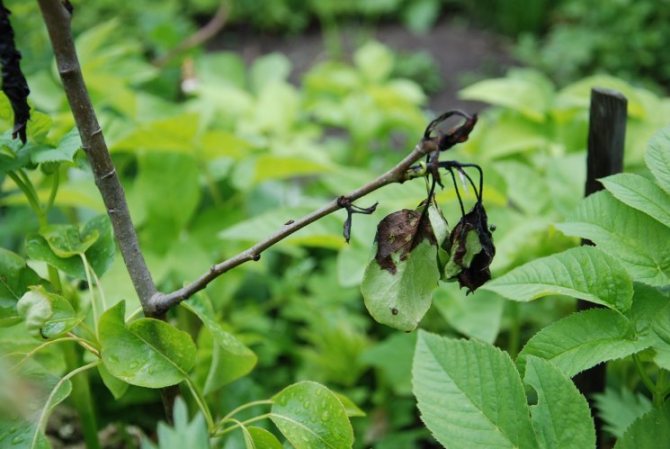

Some of them are associated with the wrong choice of variety, planting or caring for a seedling. Others are caused by disease or insect pests.
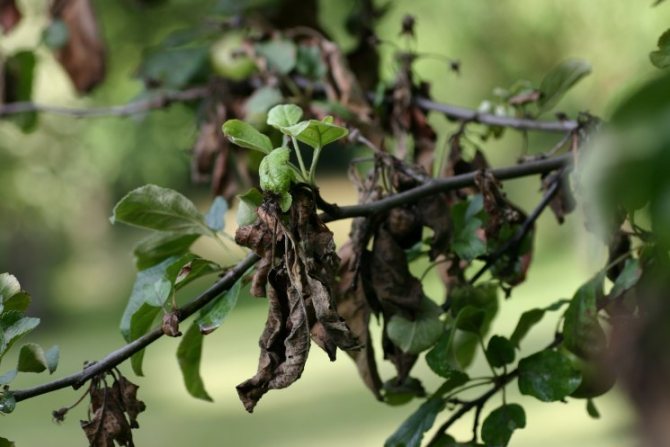

The first group of reasons is easier to exclude. This is done by purchasing seedlings in proven locations, according to climatic conditions, and by proper planting and maintenance.
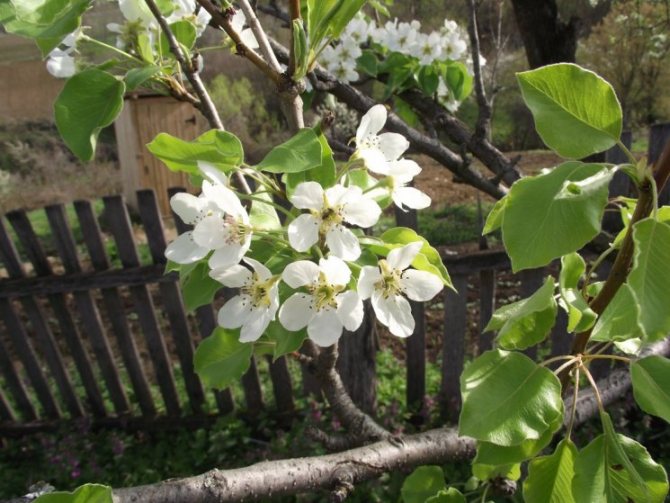

If signs of disease are detected, attention should be paid to processing the tree. In most cases, the procedure is repeated several times to completely get rid of the pests.
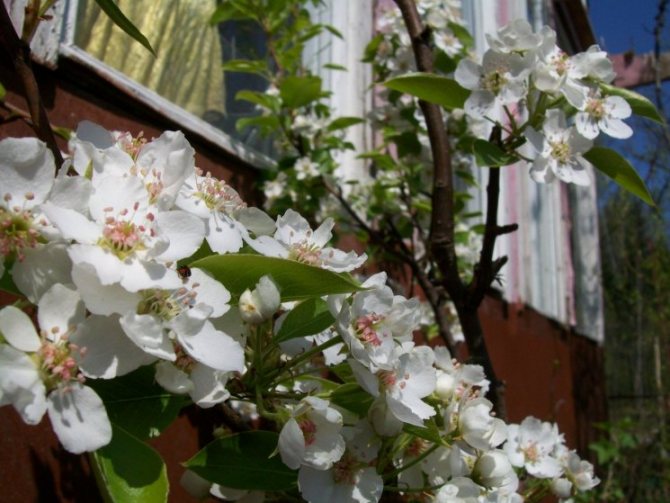

In addition, it is important to pay attention to preventive measures. In this case, harmonious growth of the pear can be expected with the timely formation of flowers and fruits on the tree.
Landing rules
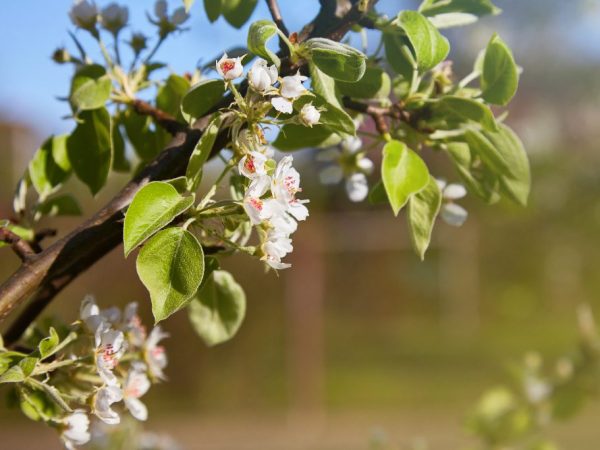

Pear needs sunlight
In order for a pear to bear fruit abundantly, several rules are observed:
- choose a well-lit place;
- observe the optimal indicators of soil acidity;
- do not allow waterlogging of the soil;
- plant the plant to a great depth;
- carry out timely and correct feeding with mineral fertilizers, since the pear does not tolerate organic matter.

